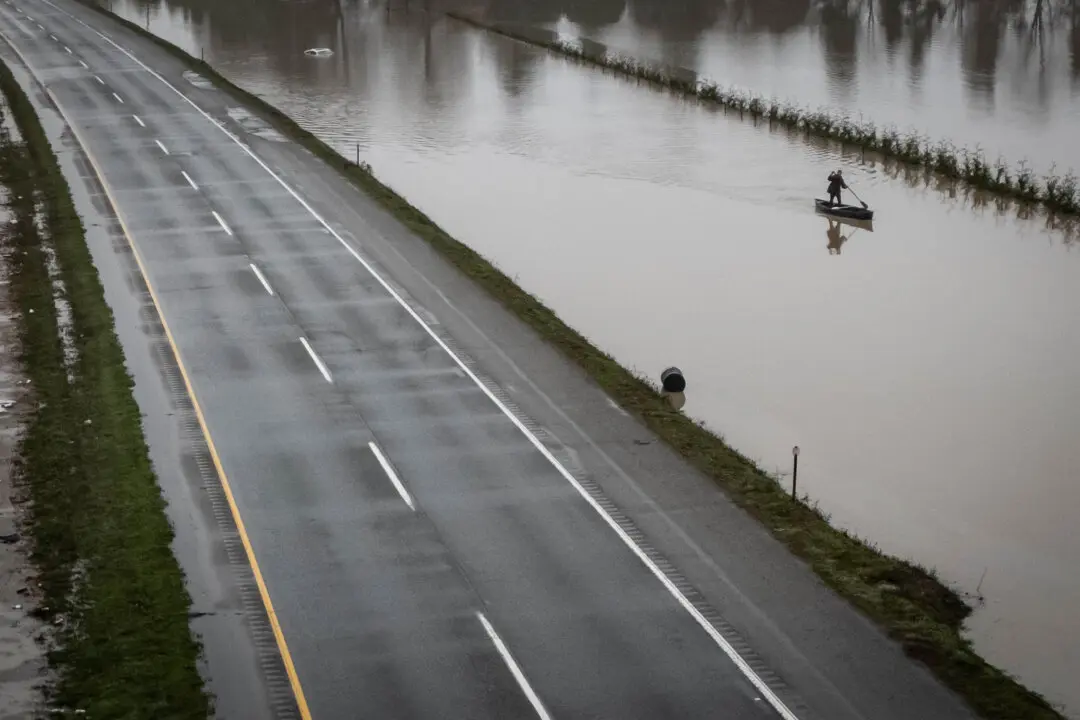Energy Minister Tim Hodgson said he won’t negotiate “through the media” when asked about reports that Ottawa may scrap the oil and gas emissions cap.
Recent articles by Reuters and the Toronto Star citing anonymous sources said that the federal government is considering dropping the oil and gas emissions cap in return for Alberta committing to carbon capture and decarbonization measures.
The federal government introduced the oil and gas emissions cap in December 2023, which applies to the exploration and production of oil and gas. The proposed law requires greenhouse gas emissions to be reduced by 35 percent below 2019 levels by 2030, allowing companies to exceed the limit if they buy offset credits or contribute funds toward decarbonization.
The emissions cap is not yet law, but draft regulations have been published under the Canadian Environmental Protection Act (CEPA) and it is set to go into effect next year.
Alberta says the emissions cap would act as a de facto restriction on production and infringes on provincial jurisdiction, with Premier Danielle Smith saying that getting rid of it is one of her top priorities. Ottawa has denied the charge, saying the regulation does not pertain to the product but rather to emissions, and therefore is able to be regulated at the federal level.
When asked if his government was indeed preparing to remove the oil and gas cap Sept. 12 during a press conference in Winnipeg, Minister Hodgson didn’t respond directly but said there are “very productive conversations going on” that he won’t discuss with the media at this time.
“We are in the middle of discussions around how we get to the results,” Hodgson said. “As I have said many times, I was in business for many, many years. I’ve negotiated many, many deals. I’ve never found it helpful to negotiate them through the media. We’re not going to do that now.”
Hodgson said that Prime Minister Mark Carney is focused on results most of all and that Alberta and the oil and gas industry have been agreeable to commit to decarbonization. This includes lowering “emissions intensity” in the oilsands, including through the proposed carbon capture facility and carbon extraction system being worked on by Pathways Alliance, a partnership of six major oilsands producers.
“We have agreement from the Alberta government on that, and all of the major producers in the Pathways Alliance agree on that. That’s unity. That’s unity we haven’t seen in a long time,” Hodgson said.
On Sept. 11, Smith posted on X about a positive meeting with Carney the previous day in Edmonton, saying she was “more optimistic than ever that the concerns of Albertans are FINALLY BEING HEARD” and that she looked forward to reaching a deal that would benefit Alberta and Canada.
Also on Sept. 11, the Prime Minister’s Office released a list of five major projects being considered for two-year, fast-tracked approval under the recently-established Major Projects Office. None of the projects being considered by the office are located in Alberta, although phase two of LNG Canada’s expansion in Kitimat, B.C., would increase demand for Alberta natural gas and give it greater export market diversification away from the United States.
Asked about the omission of an oil and gas pipeline from Ottawa’s first list of major projects, Smith pointed to her meeting with Carney the day before. She described the discussion as “encouraging,” but added that more progress is still needed.
“I think he really understands the issues that we put on the table, and we are working through how to address them,” Smith said at another press conference Sept. 11. “When I looked at the first five projects, I thought, ‘finally they get it,’ because it’s all the projects that have been difficult to build ... I think that that demonstrates a real shift in the focus of this government.”





